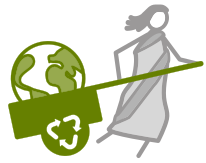Law Report: Nicaragua
Waste Pickers in Nicaragua
Introduction
‘Buzos’ or ‘Churequeros’ or waste pickers make a living from sorting and collecting waste from dump sites in Nicaragua.
Size and Significance
While the estimates vary, as unemployment spreads, large number of workers depend on dump sites forage for clothes, food, plastics and scrap metal.
Working Conditions
La Chureca is one of the largest dump sites in Central America and is located on the western part of the Nicaraguan capital city, Managua. It covers an area of 1657 acres. La Chureca means ‘trash can’ in managuan slang. Nearly 1000 people live on the site and make a living collecting recyclables for their own use or to sell to the recycling industry. Those working in La Chureca face several health problems, specifically respiratory diseases such as asthma and tuberculosis, due to the vast quantities of dust and smoke from fires on the dumpsites. Outbreaks of malaria, conjunctivitis and gastrointestinal disease are also common. A study by the Autonomous National University of Nicaragua and the Lund University of Sweden found in 2007 that more than 30 percent of the children who live and work in La Chureca are affected by lead, mercury and DDT because of exposure to garbage and consumption of fish from Lake Managua.
Earnings
A poor country, with nearly 70 per cent of the population under the poverty line, waste pickers in Nicaragua earn anywhere between 1 to 1.5 USD a day.
Law and Policy
Tweet

